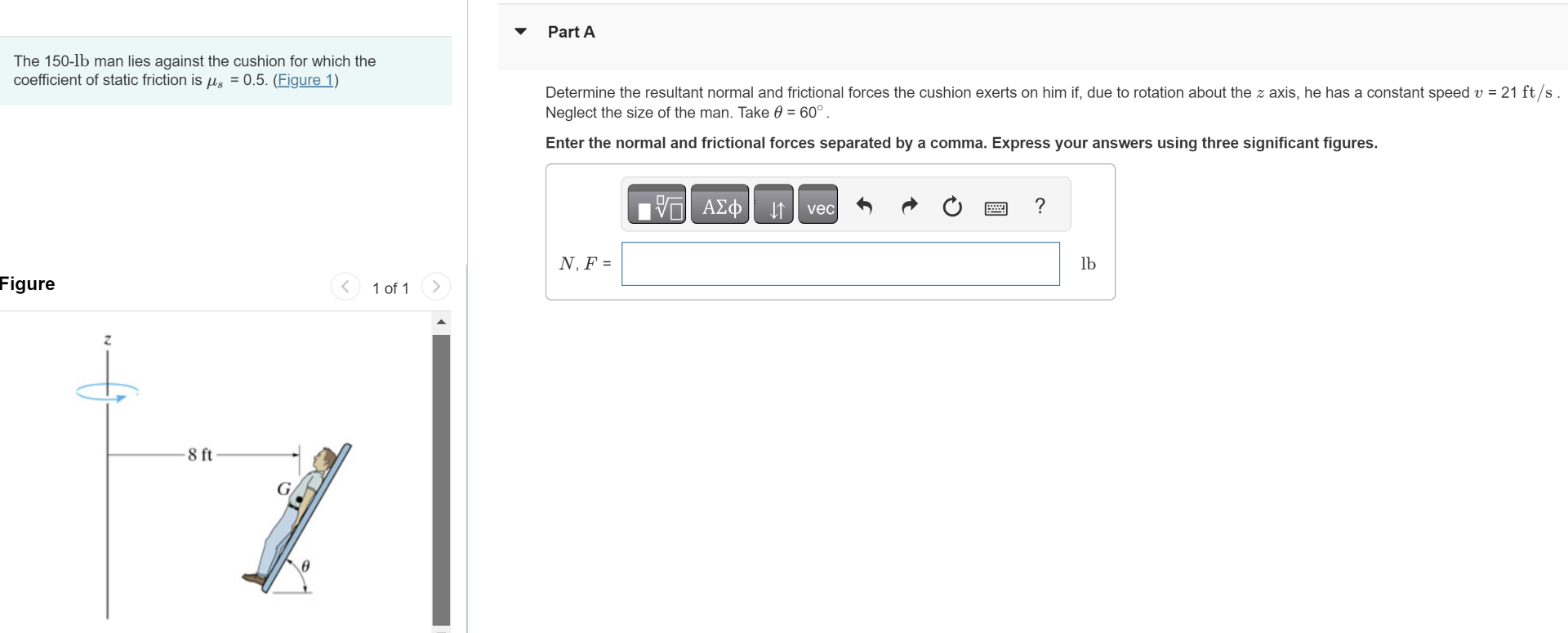Part A The 150-lb man lies against the cushion for which the coefficient of static friction is μs = 0.5. (Figure 1) Figure 1 of 1 Determine the resultant normal and frictional forces the cushion exerts on him if, due to rotation about the z axis, he has a constant speed v = 21 ft/s. Neglect the size of the man. Take θ = 60∘. Enter the normal and frictional forces separated by a comma. Express your answers using three significant figures.
